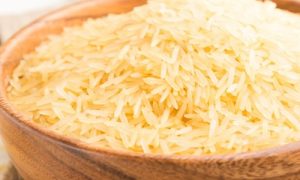Navigating India’s Rice Export Ban

ABG: Can you explain the rice export ban?
J.C. Majumdar: Since the onset of COVID-19, the Government of India has been providing free food grain including rice to 800 million people, which has brought the buffer stock of rice to the bare minimum. Export of non-Basmati rice is likely to aggravate the situation particularly in view of a reduction in rice production forecast during the current year due to adverse rainfall. However, there is currently no ban on the export of Basmati rice.
ABG: What is the difference between export of Basmati and non-Basmati Rice?
JM: While India has imposed a temporary ban on the export of non-Basmati rice due to production and food security concerns in the country, there is no such constraint in the case of Basmati rice. In fact, India is rather interested in increasing the export of Basmati rice.
The major importing countries are Saudi Arabia, Iran, UAE, Qatar, and the U.S. However, a false bogey of the presence of pesticide residues in Indian Basmati rice has been raised although there is no factual or official information on the rejection of Basmati rice consignments from the importing countries are available.
The EU is using MRL value as a non-tariff barrier against import of Indian Basmati rice by fixing default MRL value of 0.01 ppm for practically all pesticides used in rice in India and also trying to influence the Middle East countries to toe its line, although import of Basmati rice from India by EU countries is negligible.
ABG: What is the impact of rice export ban in India?
JM: It will help the Government of India to continue with free food ration to 800 million people.
ABG: What are the factors that you believe have contributed to the increase in export of Basmati rice?
JM: More and more farmers and export firms are getting interested in exporting more Basmati rice. Production seems to have also increased.
ABG: When do you predict the ban will be over?
JM: Given the estimated fall of rice production in India, we can expect the ban to end by June this year.
ABG: How does the ban affect the crop protection market?
JM: Whether rice is exported or not, the same amount of crop protection chemicals will have to be used. So, there will be no impact of rice export ban on the crop protection market.
ABG: What else do we need to know?
JM: Export of Basmati rice from India has registered a phenomenal increase of 19% during April to December of 2023. Reaching USD 3.97 billion compared to USD 3.33 billion in the previous year. Simultaneously, the quantity of exports witnessed a notable growth of 11%, increasing from 3.2 million metric tons to 3.5 million metric tons.
Source Link: https://www.agribusinessglobal.com/markets/navigating-indias-rice-export-ban/















